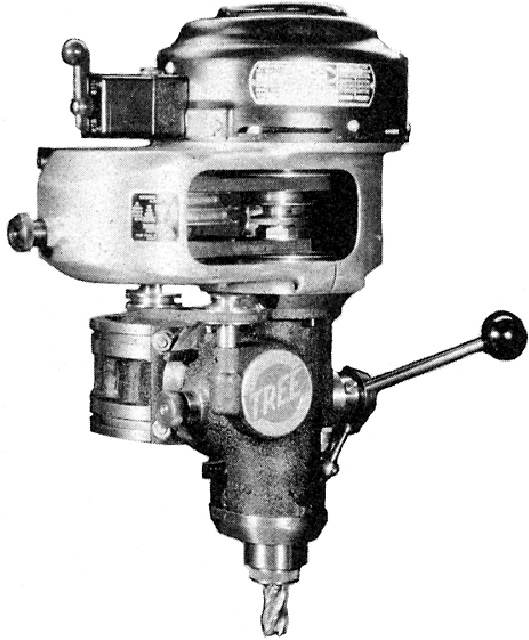
|
The Halco "Universal Head" was manufactured by Halco Products (Ajax Engineering & Manufacturing Company) of 14230 Birwood Avenue, Detroit, Michigan, USA. |
||



|
A picture that shows why the Halco and similar products were so popular - they immediately converted a simple horizontal miller into a machine tool of great versatility and could, providing the operator was content to take delicate cuts, be manoeuvred into the most unlikely of positions. It was also possible to bring the unit into use after a workpiece had been machined on the horizontal miller, enabling a job to be finished, or progressed, without the time-wasting and profit absorbing exercise of dismounting, remounting and setting up on another machine. |
||

|
Pictures from a 1942 Halco catalog showing the extreme ease of setting up the unit ,and the unlikely positions into which it could be set. |

|
"Tree" vertical attachment Model MH-4 for horizontal millers by the Tree Tool and Die Works, 1600 Junction Avenue, Racine, Wisconsin, USA. |
||
|
Although marketed under the Kearney & Trecker brand name the useful little Midgetmill and Speedmill units were both made by the Dalrae Tools Co. of Syracuse, New York and described as adaptable to fit "any milling machine". The whole assembly could be rotated about its mounting point - normally the round overarm then common on horizontal millers - and (in the case of the Midgetmill) used for boring and drilling with its fine and quick-feed quill. |
||


|
Kearney & Trecker (Dalrae) Speedmill was similar in layout to the Midgetmill, but without a quill feed and able to run at up to 5,300 rpm. |
||

|
The Tree head came complete with a swivel housing designed to socket into the housing on a horizontal miller normally used by a round overarm. The design of the housing allowed to head to nod as well as swivel. |
||
|
|
||

|
The two-speed "countershaft" drive of the Tree head is shown in diagram form on the speed plate. |